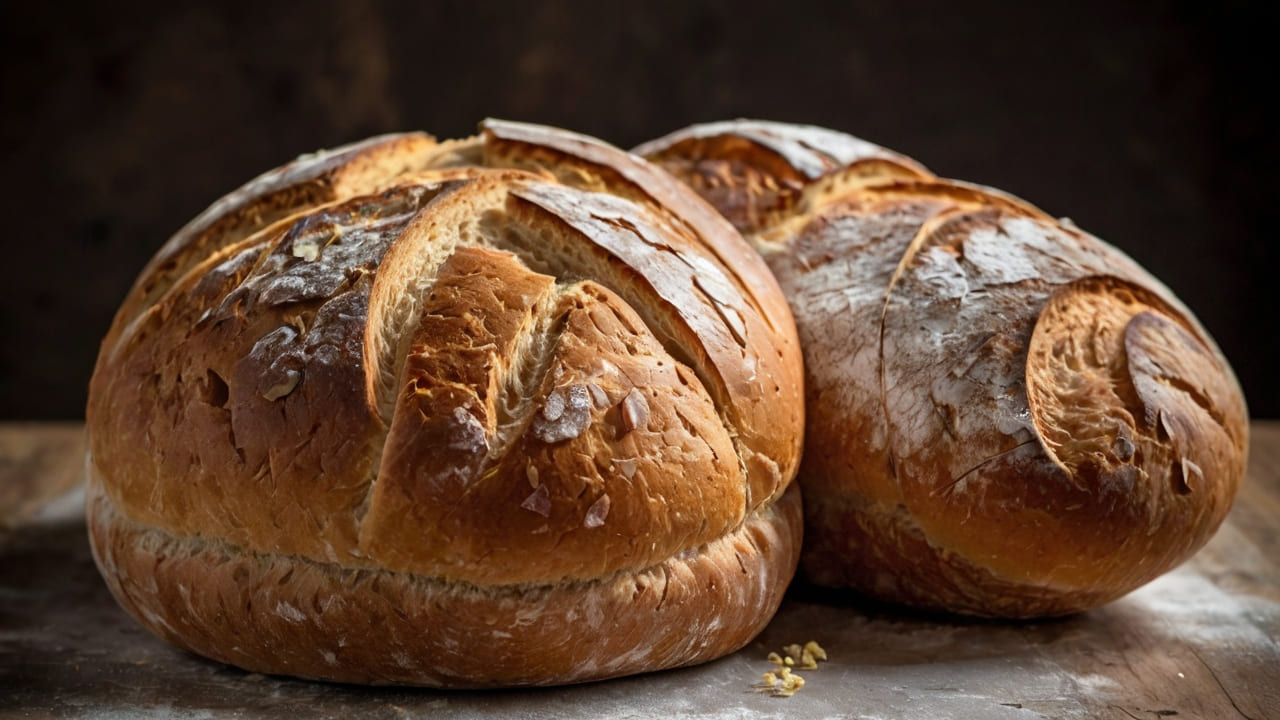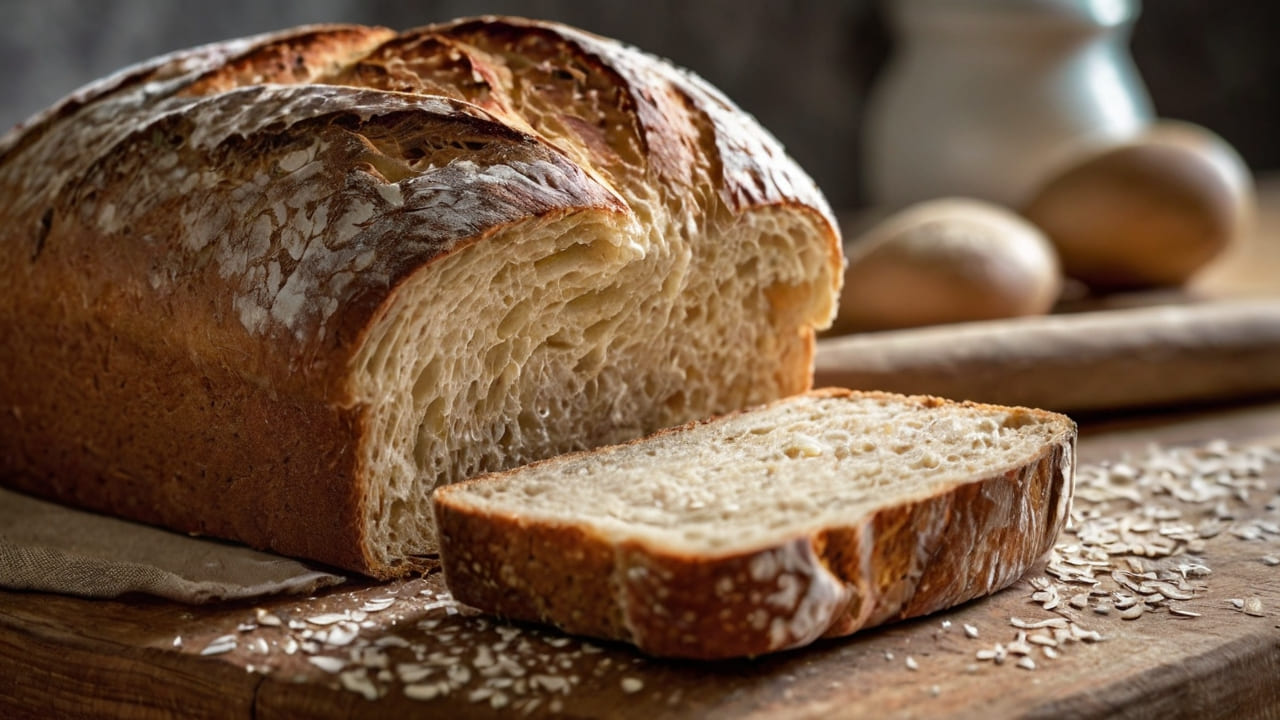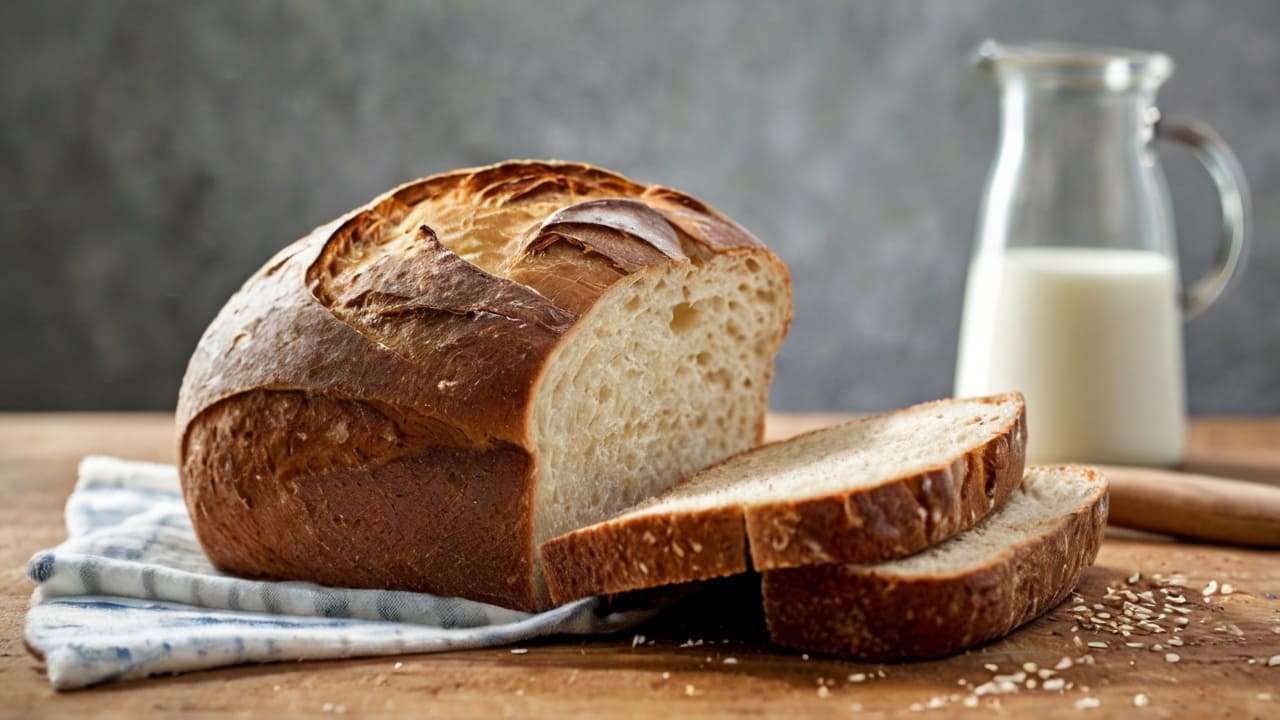
What Makes Homemade Bread More Airy? Secrets to Perfect Texture
What Makes Homemade Bread More Airy? The Key Secrets

When it comes to baking bread at home, one of the most sought-after qualities is an airy and light texture. There’s something incredibly satisfying about biting into a slice of homemade bread that’s soft, fluffy, and full of delicate air pockets. But what makes homemade bread more airy? Understanding this involves a deep dive into the science of bread-making, the ingredients used, and the techniques that transform a simple dough into a beautifully airy loaf.
Whether you’re a novice or an experienced baker, choosing the right equipment can significantly enhance your results. A high-quality bread maker can automate much of the bread-making process, ensuring consistent results every time. If you’re in the market for one, Bestbreadmaker is a fantastic resource to help you select the best bread maker tailored to your needs.
The Role of Yeast in Creating Airy Bread
Yeast is the unsung hero of bread-making. It’s the key ingredient that causes dough to rise, creating the bubbles and air pockets that make bread light and airy. Yeast ferments the sugars in the flour, producing carbon dioxide gas, which gets trapped in the dough. As the dough bakes, these gas bubbles expand, resulting in the airy texture we love.
To maximize the yeast's effectiveness, ensure it's fresh and active. Fleischmann’s Yeast is a popular choice among home bakers because of its reliability in producing consistent results. It’s essential to proof the yeast (dissolve it in warm water with a pinch of sugar) before mixing it into the dough. This step ensures that the yeast is alive and ready to work its magic.
The Importance of Proper Kneading
Kneading dough isn’t just a step in the recipe—it’s a crucial process that develops gluten, which is essential for trapping the gases produced by the yeast. When you knead dough, you’re aligning the gluten strands in a way that forms a strong, elastic network. This network holds the gas bubbles, allowing the bread to rise and become airy.
However, over-kneading can make the dough too tight, preventing it from rising properly. It’s a fine balance, but generally, kneading for about 10-15 minutes until the dough is smooth and elastic should do the trick. If you’re using a stand mixer, 8-10 minutes on medium speed should be sufficient.
The Role of Hydration in Bread Dough
Water is another critical factor in creating airy bread. The hydration level of your dough (the ratio of water to flour) determines how soft and airy the final product will be. Higher hydration doughs (those with more water) tend to produce bread with a more open crumb, meaning more and larger air pockets.
For a typical homemade loaf, aim for a hydration level of around 65-75%. This means that for every 100 grams of flour, you should use 65-75 grams of water. However, if you’re aiming for a bread with a particularly open crumb, such as a ciabatta, you might increase the hydration to around 80-85%.
The Power of a Long, Slow Rise
Time is one of the most underrated ingredients in bread-making. Allowing your dough to rise slowly, preferably in a cool environment, gives the yeast time to work its magic. A long, slow rise (also known as a cold ferment) enhances the flavor and gives the bread a better texture.
When dough rises slowly, the yeast produces gas more gradually, leading to a more even distribution of air pockets. This process also allows the dough to develop complex flavors, as the yeast has more time to ferment the sugars in the flour.
For best results, after the initial rise at room temperature, transfer the dough to the refrigerator and let it rise overnight. The next day, let it come back to room temperature before baking.
The Impact of Ingredients on Bread’s Airiness

While flour, water, yeast, and salt are the basic ingredients of bread, adding other elements can impact the texture and airiness of your loaf. For example, fats like butter or olive oil can tenderize the dough, making it softer and lighter. However, too much fat can weigh the dough down, resulting in a denser bread.
Milk is another ingredient that can affect the texture of your bread. The proteins in milk can strengthen the dough, while the sugars can feed the yeast, leading to a better rise. If you’re using milk in your bread dough, consider reducing the water content slightly to maintain the right hydration level.
How to Perfect Your Baking Technique
Baking is the final step where all your efforts come together. Preheating your oven to the right temperature is crucial. A hot oven helps the dough rise quickly (a process known as oven spring) before the crust forms, trapping the air inside.
Baking your bread on a preheated baking stone or in a Dutch oven can also improve the airiness. These methods provide a consistent and intense heat source, helping the bread rise better. Additionally, creating steam in the oven during the first few minutes of baking can keep the crust soft, allowing the dough to expand fully.
Troubleshooting Common Issues in Bread-Making
Even with the best intentions, sometimes things go wrong. If your bread turns out dense or fails to rise, it can be frustrating. Here are some common issues and how to fix them:
- Inactive Yeast: If your yeast is old or wasn’t proofed properly, the dough might not rise. Always check the expiration date and proof the yeast before using it.
- Overproofing: Letting the dough rise too long can cause the gluten to overstretch and collapse, leading to a dense loaf. Stick to the recommended rising times and temperatures.
- Underproofing: On the flip side, not giving the dough enough time to rise will result in a dense texture. Ensure the dough has doubled in size before baking.
Influences from Historical Bread-Making Techniques

Bread-making is an ancient art, with techniques passed down through generations. Understanding these historical practices can provide insight into making modern bread more airy. For instance, the use of sourdough starters dates back thousands of years. These natural leavens not only add a unique flavor to the bread but also help create a more open crumb, making the bread airier.
Peter Reinhart, a renowned bread-making expert, emphasizes the importance of long fermentation times in his book, The Bread Baker’s Apprentice. He argues that traditional methods, which involve slower rises and careful handling of the dough, lead to better texture and flavor. By following these age-old practices, modern bakers can achieve more consistent and airy results.
Enhancing Airiness with Specialized Equipment
Investing in the right equipment can make a significant difference in the airiness of your homemade bread. A stand mixer with a dough hook can help you knead the dough more effectively, ensuring that the gluten develops properly. If you’re serious about bread-making, a baking stone or Dutch oven is worth considering for the reasons mentioned earlier.
One of the most critical pieces of equipment is a good quality bread maker. For those who might not have the time to knead or watch over the dough, a bread maker can automate much of the process while still delivering airy and delicious bread. Websites like Bestbreadmaker.store offer excellent reviews and comparisons to help you choose the best bread maker for your needs.
The Art of Slicing and Storing Your Bread
Once you’ve baked the perfect airy loaf, it’s important to slice and store it properly to maintain its texture. Always let the bread cool completely before slicing to prevent it from becoming gummy. Use a sharp, serrated knife to make clean cuts without squashing the loaf.
Storing bread correctly is also crucial. Airy bread tends to dry out quickly, so keep it in an airtight container at room temperature if you plan to eat it within a few days. For longer storage, consider freezing the bread in slices and toasting them as needed.
How Professional Bakers Achieve Airy Bread
Professional bakers often have tricks up their sleeves when it comes to achieving the perfect airy bread. One such trick is the use of a preferment or poolish, which is a portion of the dough that’s prepared ahead of time and allowed to ferment slowly. This method gives the bread a deeper flavor and a lighter texture.
Many bakers also use autolyse, a technique where flour and water are mixed and allowed to rest before the yeast and salt are added. This rest period helps the flour absorb the water better, resulting in improved gluten development and a more open crumb.
Chad Robertson, of the famous Tartine Bakery, is known for his mastery of airy, rustic loaves. His method involves high-hydration doughs and careful attention to the dough’s fermentation. By studying techniques from expert bakers like Robertson, home bakers can refine their methods to produce consistently airy bread.
Creating airy homemade bread is a blend of science, technique, and patience. By understanding the role of yeast, hydration, kneading, and proper fermentation, you can significantly improve the texture of your bread. Whether you’re a novice baker or a seasoned pro, these tips and techniques will help you achieve that coveted airy crumb every time. Remember, practice makes perfect, so don’t be discouraged if your first few loaves aren’t perfect. With time and persistence, you’ll be baking light, airy bread that rivals that of any bakery.


